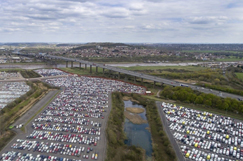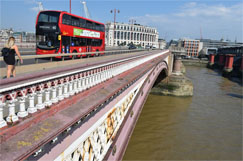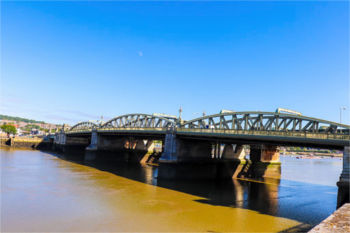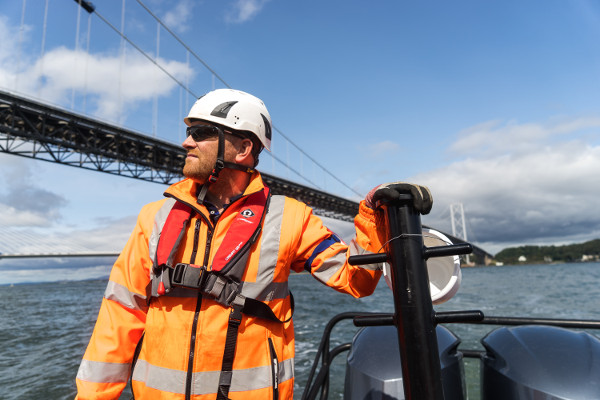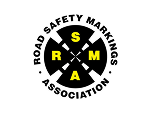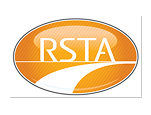A thorough assessment of Rochester Old Bridge is being undertaken by Up and Under and sister company CAN Structures, with workers abseiling to the underside of the structure to carry out the checks.
Built in 1856 and reconstructed in 1914, the Grade II listed 150m bridge carries the A2 over the River Medway in the centre of Rochester. It is owned and operated by the Rochester Bridge Trust.
According to national guidance, the cast iron, steel and concrete bridge requires regular inspections so that it can continue to operate safely.
Up and Under project director Miles Hulse said: ‘Principal inspections require a within-touching-distance examination of all parts of the bridge structure.
'To do this, a team of Bridge Inspection Certification Scheme (BICS) certified inspectors and Industrial Rope Access Trade Association (IRATA) specialists will utilise rope access techniques to gain access to the areas over the River Medway.'
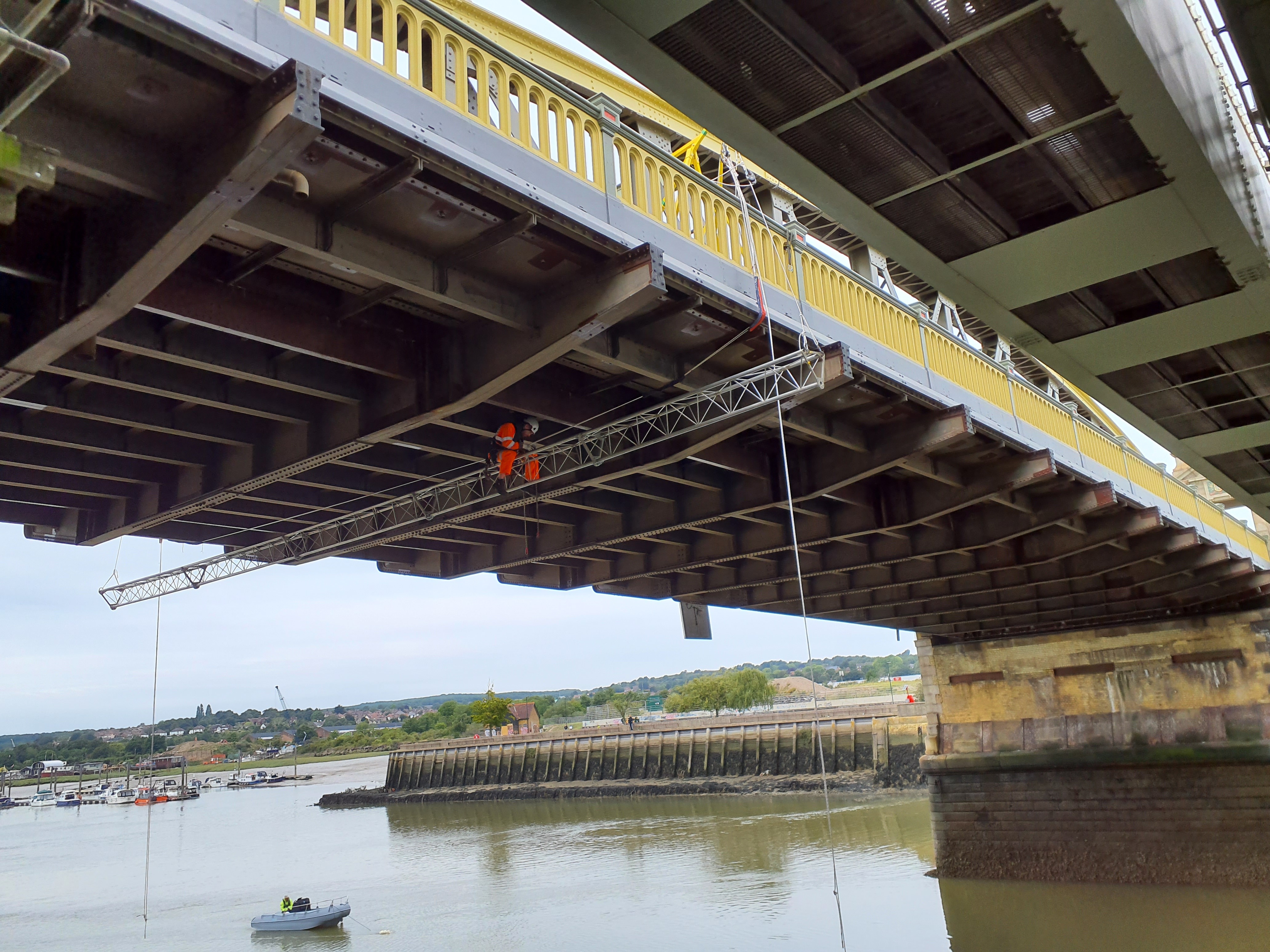
The team of inspectors will assess the overall condition of the bridge, with the goal of identifying any defects such as corrosion, loose or missing fixings, cracks, impact damage, distortion, deflection or other signs of ‘structural distress'.
‘The historic construction of the Old Bridge makes it more challenging to closely inspect the below-deck elements,' Mr Hulse added.
‘To overcome this, CAN is using its access system to provide a stable platform beneath the bridge to work from. Rope-access-trained inspectors can work more efficiently from this movable platform, which mitigates the need for temporary scaffolding or directly attached structures that might damage the protected bridge.'
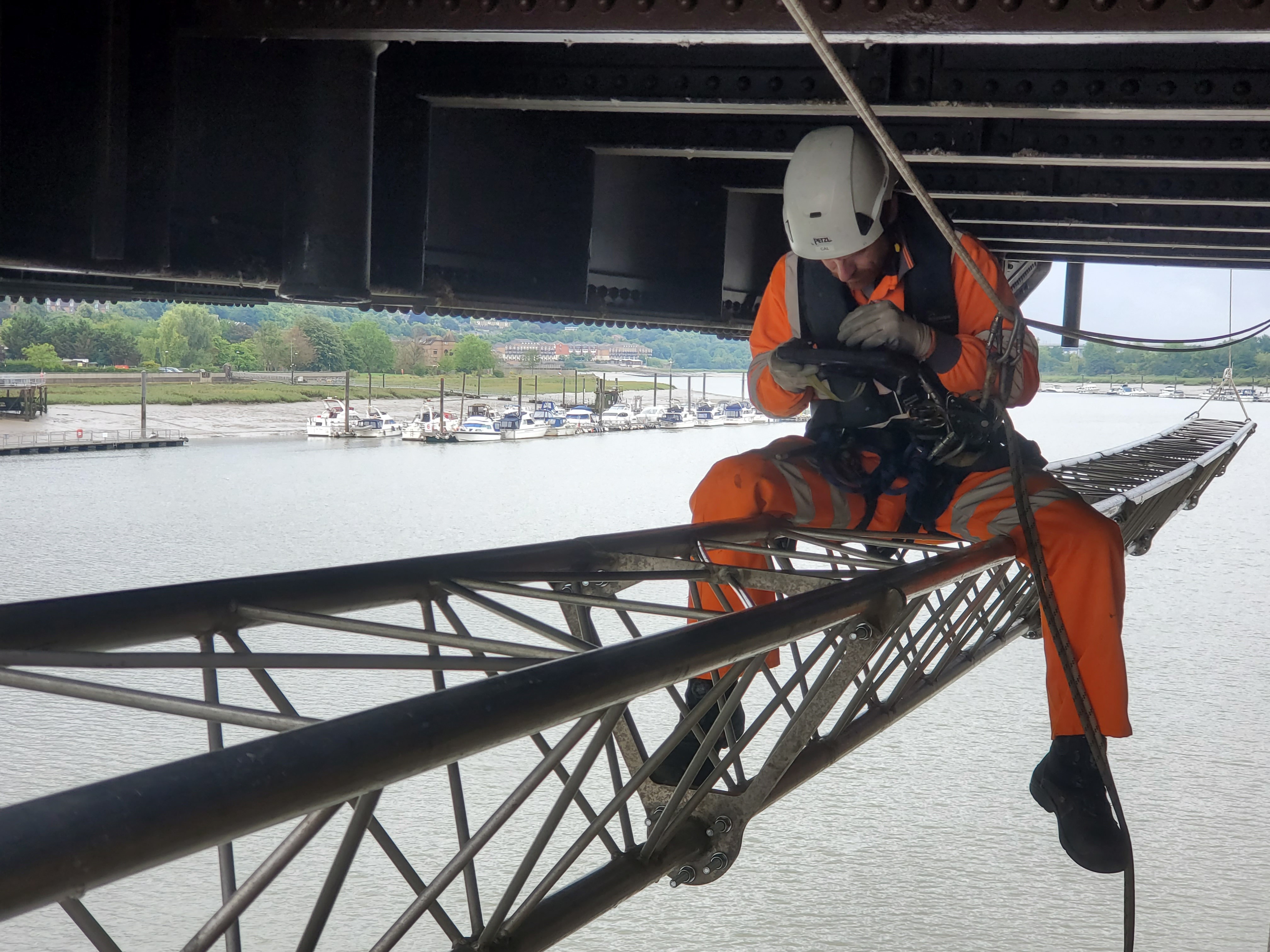
Rochester Bridge Trust bridge project manager Helen Rowe said: ‘It's a pleasure working with Up and Under. They have embraced our requirement to minimise disruption to bridge users while also respecting the historic structure they are inspecting.'
For centuries, Kent has maintained a bridge across the River Medway at Rochester. The earliest surviving written evidence assigned responsibility for maintaining a bridge in the area, which was originally built by the Romans, to 54 parishes, manors, and estates surrounding Rochester.
By letters patent of Richard II these contributory parishes were formed into a commonalty in 1399 and were charged to elect two Wardens to oversee the maintenance and repair of a new bridge, which had replaced the Roman structure by 1392.
From 1576, households assembled each year at Rochester Castle to elect wardens, twelve assistants and four auditors to manage the bridge. This system continued to work until the Rochester Bridge Act 1908 abolished the annual election and provided for the nomination of the Wardens and Assistants by local councils and the river authorities.



